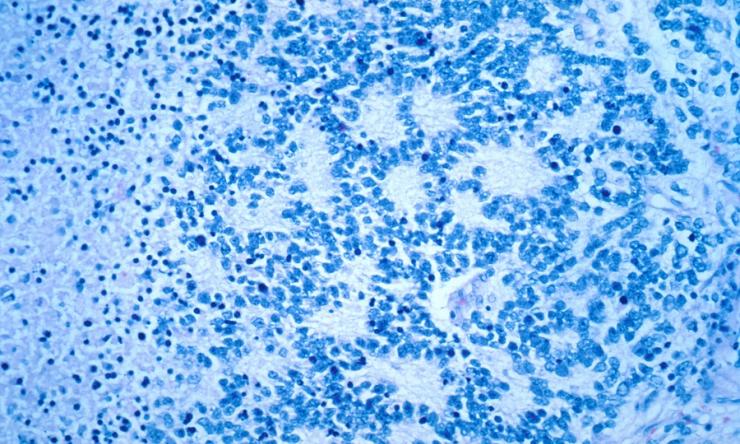Restoring molecular clock suppresses neuroblastoma tumor growth
Our cells follow a molecular clock that controls cell metabolism, much like the bodyŌĆÖs circadian rhythm controls sleep cycles. Researchers at ▓▌┴±╔ńŪ°╚ļ┐┌ and Texas ChildrenŌĆÖs Cancer Center have found that the molecular clock may be key to treating neuroblastoma. In a new study published in , researchers show that restoring normal function of the molecular clock suppresses tumor growth in advanced neuroblastoma and can make tumors more sensitive to conventional chemotherapy.
The researchers studied patients with high expression of MYCN, known to be the major oncogenic driver of neuroblastoma. In those patients, two main components of the molecular clock were repressedŌĆöBMAL1, which oscillates to drive the clock cycle, and ROR’üĪ, which activates BMAL1. This repression correlated with poor clinical outcome.
ŌĆ£We were very interested in how MYCN can reprogram tumor metabolism,ŌĆØ said Dr. Eveline Barbieri, assistant professor of pediatrics ŌĆō hematology and oncology at Baylor. ŌĆ£We found that MYCN amplification inhibits BMAL1 expression and oscillation, leading to metabolic reprograming and oncogenesis.ŌĆØ
Because BMAL1 and ROR’üĪ suppression allowed the tumor cells to grow, the researchers wanted to know if restoring these components of the molecular clock would stop growth in neuroblastoma cells. They tested two approaches in the labŌĆögenetic overexpression of ROR’üĪ and a pharmaceutical approach using a synthetic ligand that reactivates ROR’üĪ. Both techniques successfully restored BMAL1 expression and oscillation.
ŌĆ£Our strategy to restore BMAL1 expression also blocked tumor growth, suggesting that repression of the molecular clock is indeed oncogenic,ŌĆØ Barbieri said. ŌĆ£We believe restoration of the molecular clock is tumor suppressive in neuroblastoma.ŌĆØ
The teamŌĆÖs research also showed that restoring BMAL1 expression and molecular clock function sensitized neuroblastoma tumors to conventional chemotherapy treatments, offering a potential future therapeutic approach.
ŌĆ£We know metabolic processes are really important in how tumors develop resistance to chemotherapy,ŌĆØ Barbieri said. ŌĆ£In the future, if we can develop therapeutics that restore the molecular clock in a clinical setting, we may be able to use them in combination with standard chemotherapy to avoid treatment resistance.ŌĆØ
Dr. Myrthala Moreno-Smith and Dr. Ling Tao, researchers in the Barbieri Lab, are first and second authors of the publication. This study was supported by the AlexŌĆÖs Lemonade Stand Foundation for Childhood Cancer, St. BaldrickŌĆÖs Foundation, and the Cancer Prevention and Research Institute of Texas (CPRIT). For a full list of authors and contributing authors, see the .



